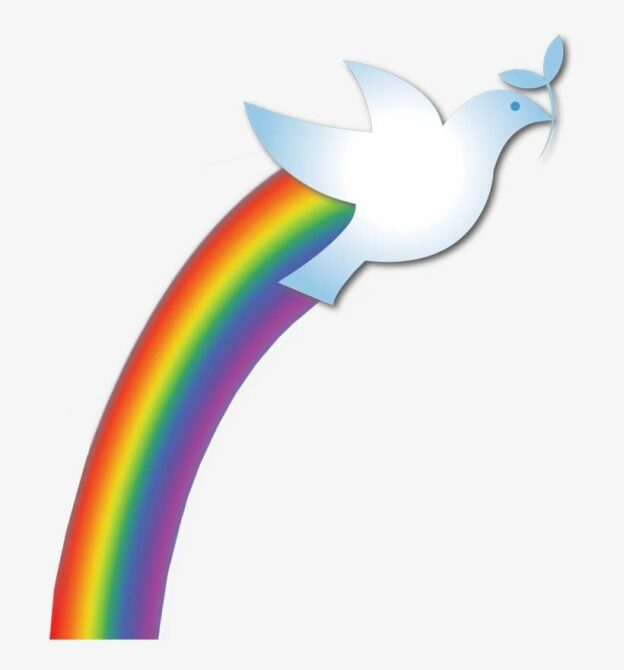It’s intriguing that two separate images from parshas Noach have been turned by contemporary society into widely used symbols – and each one is decidedly off the mark.
A dove holding an olive branch in its mouth has become employed as a symbol of peace. To be sure, the sign that the flood was receding was certainly a happy one. But the message of the dove, according to Jewish tradition – the source, after all, of the Torah’s account itself – was not about peace.
It was, in the words of the Gemara (Eruvin 18b), an expression of willful dependence on the Creator. “The dove,” the passage states, “said before the Holy One, Blessed be He: ‘Master of the Universe, let my food be bitter as an olive but given into Your hand, rather than sweet as honey but dependent upon flesh and blood’.”
The dove had been well-fed by Noach throughout the months of the flood. But it is described as grateful for the opportunity to be fed directly by the Divine, without a human intermediary. So, rather than “peace,” the dove and its bounty are a symbol of striving for closeness to God.
And then we have the rainbow, the Divine “sign” given to Noach, and to all humanity, adopted of late as a symbol of “pride” in flouting the Torah’s directives to humanity regarding human sexuality. The dove being misguidedly co-opted as a symbol of peace is disappointing. But it pales beside the rainbow’s employ to promote things profoundly at odds with Torah and truth.
The rainbow, according to the Torah’s text, is a sign that Hashem will not destroy His world again – even if humanity is deserving of such, which may be one reason for Chazal’s admonition to not gaze exceedingly at a rainbow; it would be embarrassingly uncouth.
The flood itself came about in part because of sexual immorality (Rashi, Beraishis 6:11).
Nothing could be more woefully misguided than employing the rainbow as a celebratory symbol of what played a role in causing the world’s destruction in the time of Noach.
© 2023 Rabbi Avi Shafran
